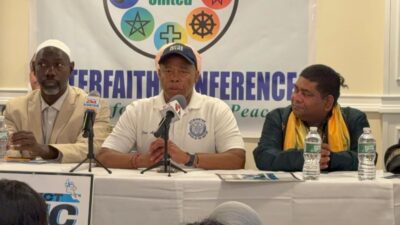
Descendants of enslaved people who populate a tiny island community are once again fighting local officials who have proposed eliminating protections that for decades helped shield the Gullah-Geechee residents from high taxes and pressure to sell their land to developers.
Residents of Hogg Hummock say they were stunned last month when McIntosh County commissioners unveiled a proposal to cast aside zoning ordinances that limit homes to modest sizes in the enclave of 30 to 50 Black residents on Sapelo Island off the coast of Georgia.
The rules were enacted in 1994 for the sole purpose of protecting one of the South’s few remaining communities of people known as Gullah, or Geechee in Georgia, whose ancestors worked island slave plantations. Their isolation from the mainland meant they retained much of their African roots and traditions.
Residents say losing zoning protections would drive out Hogg Hummock residents by attracting wealthy transplants eager to build large beach houses, causing land values and property taxes to soar.
“It’s the erasure of a historical culture that’s still intact after 230 years,” said Reginal Hall, a Hogg Hummock landowner whose family has deep roots on the island. “Once you raise those limits and the land value increases, we only have two to three years at most. If you talk about the descendants of the enslaved, 90% of us will be gone.”
Located about 60 miles (96 kilometers) south of Savannah, Sapelo Island remains separated from the mainland and reachable only by boat. Since 1976, the state of Georgia has owned most of its 30 square miles (78 square kilometers) of mostly unspoiled wilderness. Hogg Hummock, also known as Hog Hammock, sits on less than a square mile of modest homes amid dirt roads.
Gullah-Geechee communities are scattered along the Southeast coast from North Carolina to Florida, where they’ve endured since their enslaved ancestors were freed by the Civil War. Scholars say these people long separated from the mainland retained much of their African heritage — from their unique dialect to skills and crafts such as cast-net fishing and weaving baskets.
Hogg Hummock earned a place in 1996 on the National Register of Historic Places, the official list of America’s treasured historic sites. But for protections to preserve the community, residents depend on the local government in McIntosh County, where 65% of the 11,100 residents are white.
The current ordinance designating a special zoning district for Hogg Hummock limits homes to 1,400 square feet (130 square meters) of heated space, prohibits paving except for building foundations and requires a permit to demolish any structure deemed eligible for the National Register.
The proposed changes before county commissioners would eliminate those limits on development. It also gets rid of language that recognizes Hogg Hummock as a community with “unique needs in regard to its historic resources” and says the county should help prevent “land value increases which could force removal of the indigenous population.”
Instead, the proposed revisions describe Hogg Hummock as “a community on the island with limited water and/ or sanitary sewer facilities.” The zoning proposals were emailed to island residents Aug. 16 and posted on the county government’s website.
“It’s pretty much clearly saying we don’t care about the culture, the history or the people,” said Jazz Watts, a Hogg Hummock resident.






